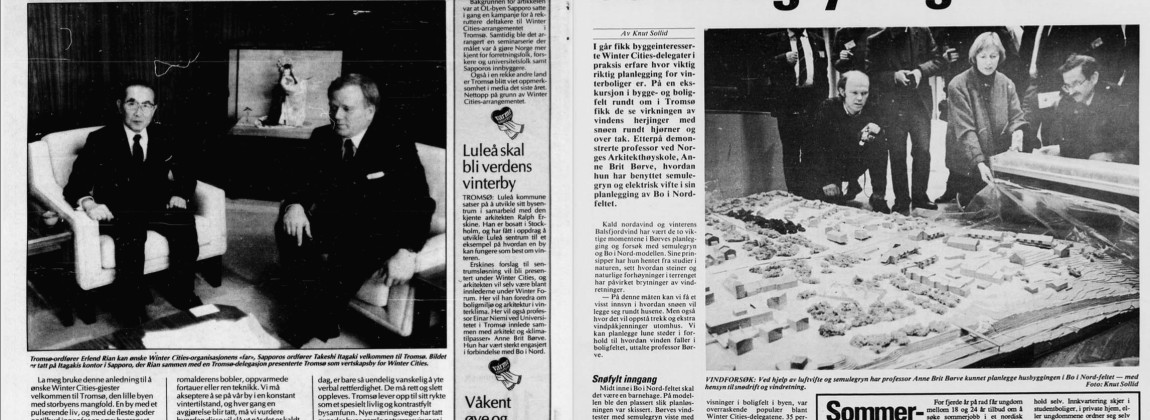- Type of project
- PhD
- Duration
- 01.09.2023 -> 31.08.2026
About the project
The project explores the evolution of travelling methods for winter-adapted architecture and its socio-environmental significance in the development of Arctic Norwegian Cities.
Since the mid-twentieth century, buildings and cities in the Arctic have been defined through a post-war modernist urban development, where ‘southern ideas and ideals’ about what a northern city should be have preoccupied the architectural practice. The ‘Arctic’ has been defined through many utopian projects, where habitation in the ‘extreme environments’ has been seen as a technological challenge, resulting in micromanagement of urban climates and built form, disregarding the socio-cultural context, at the expense of the northern city-dwellers. The urgency of finding ‘new methods’ for architecture and urban form to adapt to local winter climate has been addressed on several occasions throughout the last century, especially during the rise of the Winter Cities Movement in the 1970s-80s. Contemporary urban development practices in the Arctic region seem to have ignored the evidence of past mistakes and continue to promote modernist methods for urban form, with the absence of local winter knowledge. Through a historical and critical perspective, this PhD project will follow the evolution of ‘new methods’ for winter-adapted architecture across ‘Arctic places’ throughout the last 100 years. It will, more specifically, map the trajectories of ‘travelling winter knowledge’ in the architectural practice across time and distance and find local adaptations to this winter architecture in Arctic Norway. By looking at the ‘travelling winter knowledge’ in and out of Norway, the aim is to better understand how the urban form of the Norwegian Winter City has evolved under the influence of such global method exchange. The project is interested in how urban climatology has been used as a formgiving tool in Arctic architectural production, what ‘new methods’ for winter architecture have emerged throughout time and the socio-environmental significance of these methods in developing the Norwegian Winter Cities.





